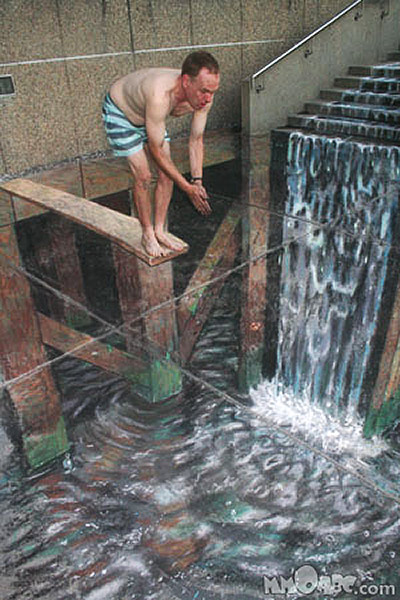anonymunchy said:
What do you mean the illusion is broken when you see the effect in person? Why wouldn't it appear 3D anymore? Wasn't that the whole idea of the video? I always figured glasses-free 3D is what they were going for with the Wii U based off some patent releases from about 2 years ago I think. I'm not a technical wizard but there's a camera and a sensor bar in the palm of your hand, sounds like they could achieve something similar with the Wii U, without adding any external peripherals. (as you mention as well) |
3D is perceived with 4 bits of information: motion parallax, focus, convergence, and visual clues. Any 2D picture covers the last one, because our brains see the shadows, reflections, faces, etc. and understand the scene should be 3D. However 99% of the time this isn't enough to trick us into thinking it is 3D.
3D movies and the 3DS have the visual clues, but they also have convergence. The viewer's eyes converge on a 3D point in space rather than on the 2D screen. This is by far the strongest 3D clue our brain works with. Even on its own our brain perfectly perceives the image as 3D, as shown with magic eye pictures.
Head tracking is giving the visual clues ad the motion parallax, but if it lacks 3D convergence than 90% of the time the brain still perceives it as 2D. Plus the effect only works while the viewer is in motion. Unless you plan to bob your head back and fourth, it's just not good enough on its own.
In videos of the effect however, our brains only go off of visual clues. Because we are so used to seeing 3D scenes represented as 2D pictures, our brain just assumes the screen in head tracking videos would be 3D in real life. In the youtube video all of the visual clues say it's 3D, so we assume in real life it'd work that way. It doesn't. It's actually a very similar effect to viewing pictures of 3D chalk drawings.

All the visual clues in that picture make it almost impossible to know that most of it is flat, not 2D. Looking at the picture it "feels" 3D even, or at least if you imagine this scene in your head, it'd be 3D. Viewing it in real life, even from this perspective, the illusion would be much worse. Convergence and focus would instantly tell you it's 2D, while when viewing a picture your brain ignores those. The same is happening in the head tracking video and every other one trying to look 3D in that matter.
Focus is by far the most ignored 3D bit but it's still pretty valuable. There's only one 3D screen I know of that actually uses it.




















